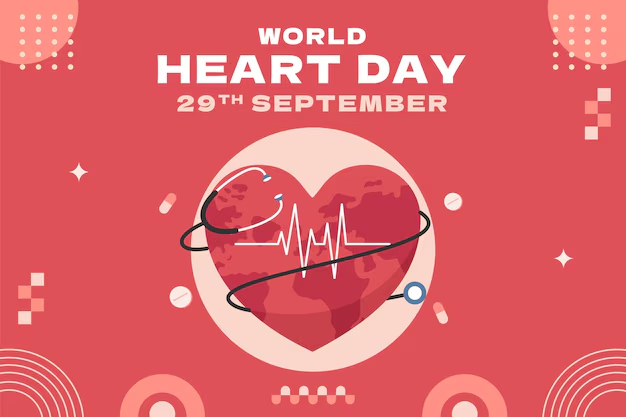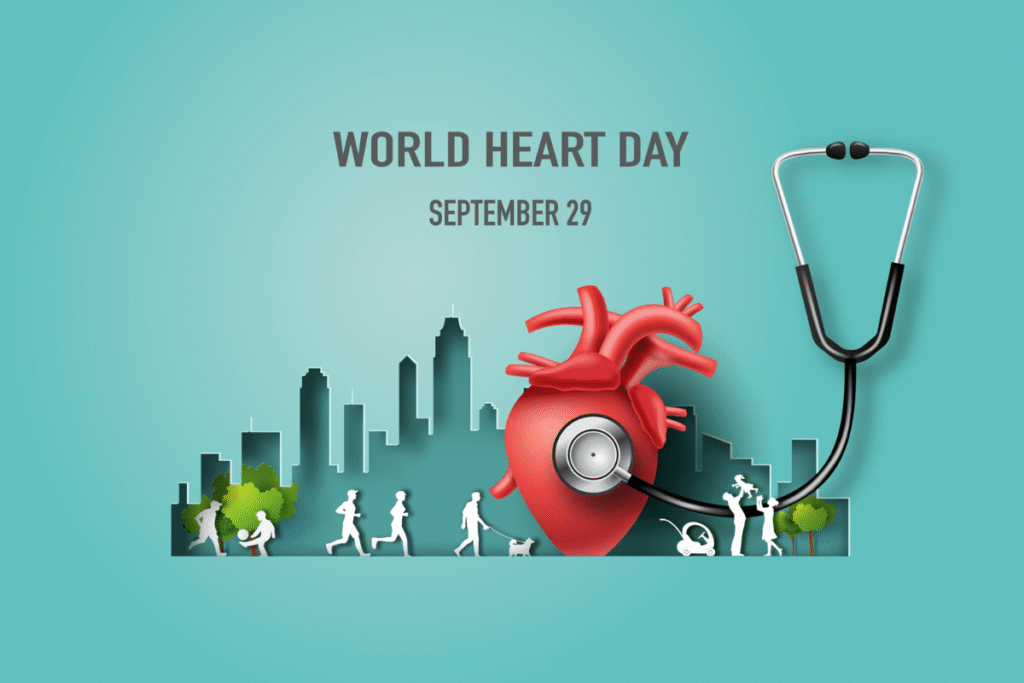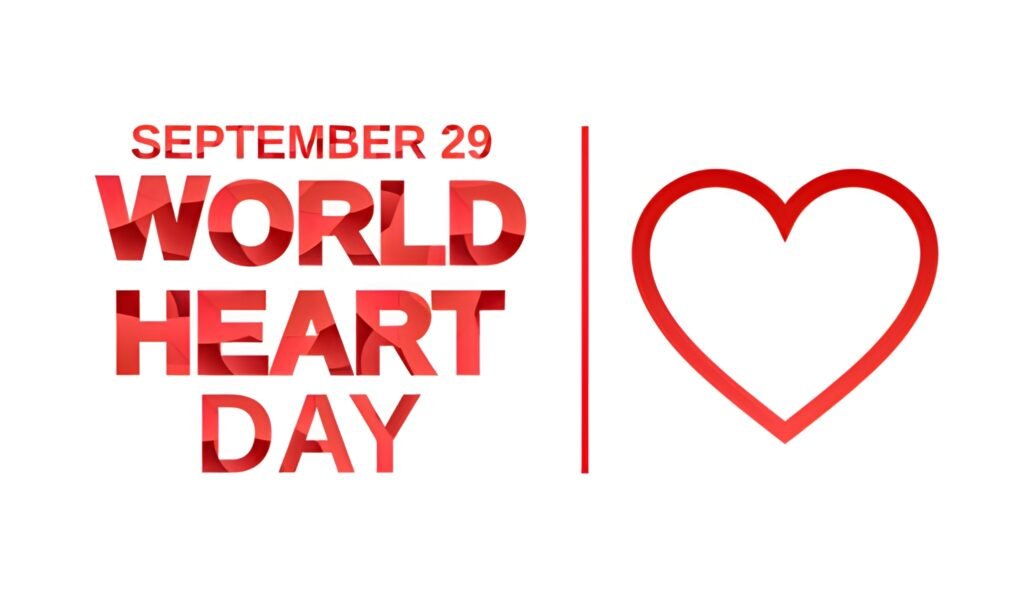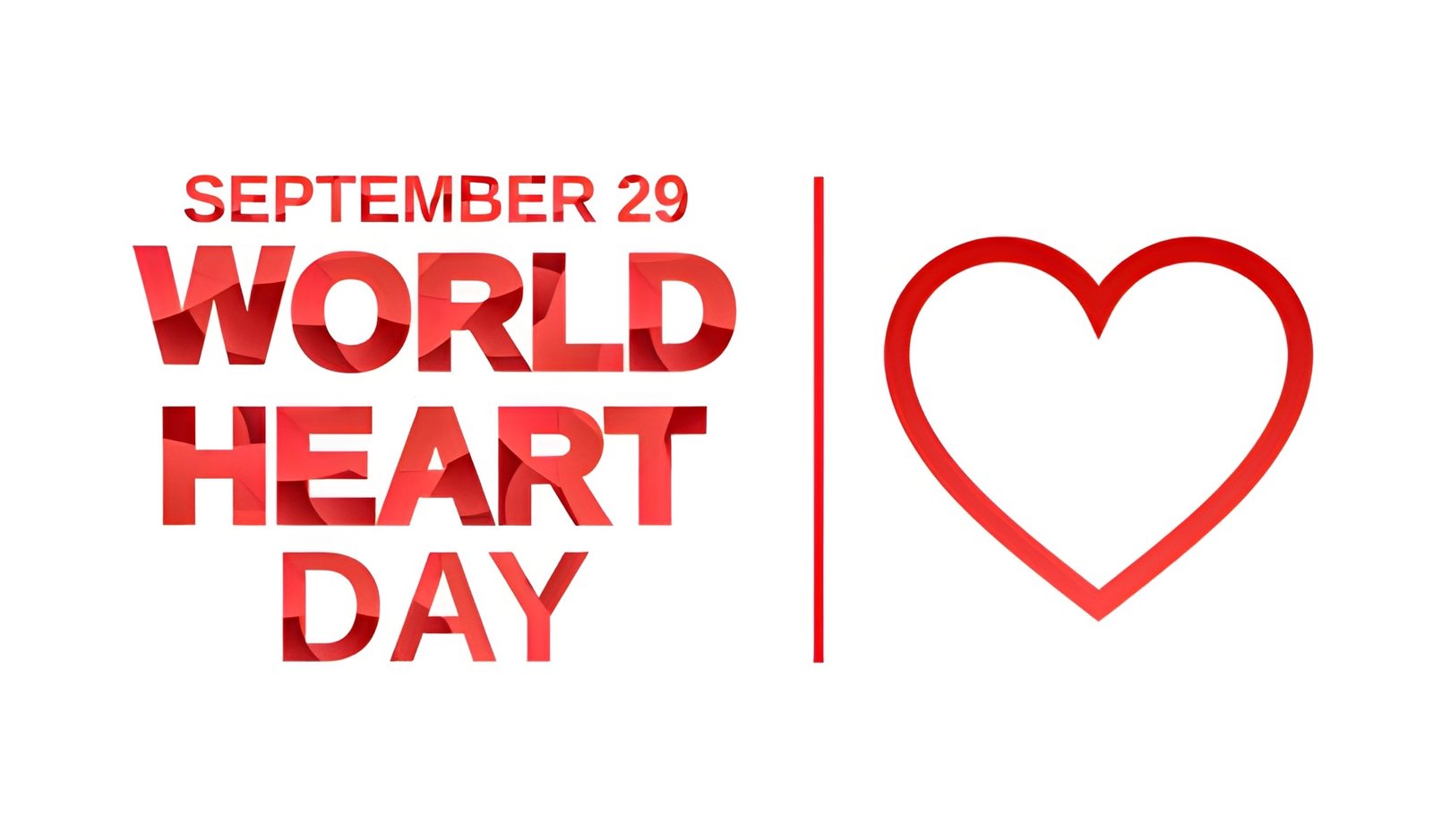Introduction – Why World Heart Day Matters More Than Ever
Every year, September 29 is observed as World Heart Day, a global campaign initiated by the World Heart Federation to raise awareness about cardiovascular health. The day serves as a reminder that heart disease remains the leading cause of death worldwide, yet many of these deaths are preventable through lifestyle changes, awareness, and timely medical intervention.





In 2025, the message resonates with alarming urgency in India, where heart failure among young adults is on the rise. What was once considered a disease of the elderly is increasingly being diagnosed in people in their 30s and early 40s. Experts warn that poor lifestyle habits, high stress levels, smoking, alcohol consumption, and dietary imbalances are fueling a silent but deadly epidemic.
According to the World Health Organization (WHO), eight people die from cardiovascular diseases (CVDs) every minute in the South-East Asia region, with India contributing significantly to these numbers. Half of these deaths are premature, occurring in people below 70 years of age. Even more concerning, the World Heart Federation reports that up to 80% of premature CVD deaths are preventable with appropriate measures.
The growing prevalence of heart failure in India’s younger population is a wake-up call for individuals, families, communities, and policymakers alike.
Understanding the Burden of Heart Disease in India
The Scale of the Crisis
Cardiovascular diseases account for more deaths in India than any other condition. Recent reports indicate:
- India records over 28% of total deaths due to cardiovascular diseases annually.
- Around 54.5 million Indians live with heart conditions in 2025.
- The incidence of heart attacks among people under 45 has nearly doubled in the last decade.
- In metropolitan cities, 1 in 5 cardiac cases now involve patients under 40.
This is a staggering public health burden, and the rise in heart failure cases among younger demographics is shifting how doctors, hospitals, and governments approach the issue.
Why Young Indians Are at Greater Risk
Several unique socio-economic and lifestyle factors are driving this trend:
- High work stress in competitive careers.
- Urbanization leading to sedentary lifestyles.
- Dietary shifts from traditional, balanced meals to processed and fast foods.
- Early smoking and alcohol use.
- Genetic predisposition among South Asians, who naturally have higher cardiovascular risk.
Heart Failure: No Longer Confined to the Elderly

As Dr. Viveka Kumar, Vice Chairman & Chief of Cath Labs (Pan Max), Max Super Speciality Hospital, New Delhi, told NDTV:
“Heart failure is no longer a condition confined to the elderly. Increasingly, we’re seeing patients in their 30s and early 40s presenting with advanced stages of heart failure — often when the damage is already extensive, and symptoms begin to disrupt daily life.”
This statement highlights the delayed presentation problem — younger patients often ignore early symptoms or assume they are too young for serious heart problems, resulting in advanced disease by the time they seek treatment.
The silent progression of heart dysfunction, coupled with lifestyle negligence, makes this trend particularly dangerous.
What Is Heart Failure?
Heart failure is not the same as a heart attack. Instead, it refers to the inability of the heart to pump blood effectively, depriving the body of oxygen and nutrients. It can result from multiple underlying conditions, including coronary artery disease, hypertension, diabetes, and lifestyle choices.
Types of Heart Failure
- Left-sided Heart Failure
- The most common type, caused by the left ventricle’s inability to pump blood properly.
- Leads to fluid buildup in the lungs, causing breathlessness.
- Right-sided Heart Failure
- Occurs when the right ventricle fails, often due to left-sided failure.
- Leads to swelling in legs, ankles, and abdomen.
- Systolic vs. Diastolic Failure
- Systolic: Heart muscle cannot contract with enough force.
- Diastolic: Heart muscle becomes too stiff to fill properly.
Symptoms of Heart Failure
- Persistent fatigue and weakness.
- Shortness of breath during activity or rest.
- Swelling in legs, ankles, and feet.
- Rapid or irregular heartbeat.
- Persistent cough or wheezing.
- Difficulty concentrating or confusion.
The problem with young adults is that these symptoms are often dismissed as stress or overwork, delaying diagnosis.
Lifestyle Factors Driving the Epidemic

Stress and Mental Health
- The pressure of high-paced jobs, long working hours, and economic uncertainties are leading to chronic stress, which raises blood pressure and increases cardiac strain.
Smoking and Tobacco Use
- Studies show nearly 25% of Indian men and 2% of women under 40 are active smokers.
- Tobacco damages blood vessels, accelerates plaque buildup, and increases risk of heart failure.
Alcohol Consumption
- Binge drinking and regular alcohol intake, increasingly common in urban youth, weaken the heart muscle (alcoholic cardiomyopathy).
Poor Diet
- High intake of fast foods, refined sugars, and trans fats has led to obesity and metabolic syndrome.
- Low consumption of fruits, vegetables, and whole grains deprives the heart of essential nutrients.
Physical Inactivity
- Desk jobs, reduced physical activity, and increased screen time mean that young Indians are more sedentary than ever.
- Sedentary behavior is strongly linked to cardiovascular disease.
Diabetes and Hypertension
- Early onset of diabetes and high blood pressure is another growing problem.
- Both conditions are strong risk factors for heart failure.
Expert Opinions and Medical Insights

Dr. Vishal Rastogi, Director of Cardiology & Advanced Heart Failure Program at Fortis Escorts Heart Institute, Delhi, highlights that:
“Fortunately, medical innovation is transforming how we manage advanced heart failure. From advanced drugs to implantable devices, patients today have more options for treatment and survival than ever before.”
Doctors emphasize the importance of:
- Early detection through regular screening.
- Public awareness campaigns targeting young adults.
- Lifestyle interventions alongside medical treatment.
Medical Innovation in Heart Failure Management
Advanced Medications
- ARNIs (Angiotensin Receptor-Neprilysin Inhibitors) improve heart function.
- SGLT2 inhibitors, originally for diabetes, are now proven to benefit heart failure patients.
Devices and Surgical Options
- Implantable cardioverter defibrillators (ICDs) prevent sudden cardiac death.
- Cardiac resynchronization therapy (CRT) improves heart rhythm.
- Left Ventricular Assist Devices (LVADs) act as mechanical pumps for advanced cases.
Heart Transplantation
- Remains the gold standard for end-stage heart failure.
- India performs around 250–300 heart transplants annually, but demand is much higher.
Case Studies – Heart Failure in Young Indians
- Ravi, 34, IT Professional (Bengaluru)
- Collapsed during a project deadline. Diagnosed with dilated cardiomyopathy due to alcohol use and stress.
- Now on advanced medication and lifestyle therapy.
- Priya, 29, Teacher (Lucknow)
- Experienced severe breathlessness. Found to have undiagnosed hypertension leading to heart failure.
- Saved by early intervention.
- Amit, 41, Marketing Executive (Delhi)
- Ignored persistent fatigue for months. By the time he sought help, his ejection fraction (measure of heart’s pumping capacity) had dropped to 25%.
- Now living with an implanted device.
The Preventive Approach – What Can Young Adults Do?

Experts stress that 80% of premature CVD deaths are preventable. Key steps include:
- Regular health check-ups after age 25.
- Maintaining a balanced diet rich in vegetables, fruits, lean protein, and whole grains.
- Engaging in 150 minutes of moderate exercise per week.
- Avoiding smoking and excessive drinking.
- Stress management through yoga, meditation, or hobbies.
- Controlling diabetes and hypertension with medication and lifestyle.
Policy Recommendations for India
To combat the epidemic, India must act decisively:
- National screening programmes for heart health in young adults.
- Workplace wellness initiatives to reduce stress.
- Taxation and regulation on tobacco and unhealthy foods.
- Increased investment in cardiology infrastructure and training.
- Awareness campaigns targeting schools and colleges.
Conclusion – A Wake-Up Call on World Heart Day 2025


The rise of heart failure among young Indian adults is more than a health crisis; it is a societal challenge that threatens productivity, families, and the future workforce.
World Heart Day 2025 reminds us that while the problem is urgent, solutions are within reach. Through awareness, prevention, early diagnosis, and advanced medical care, India can reverse this trend.
As Dr. Kumar warned, heart failure is “no longer confined to the elderly.” But with timely action, young Indians can still safeguard their most vital organ — the heart.

